I used to have Kindergarteners write in pencil and now I have them use a felt-tip marker.
One autumn day in the Kindergarten writing workshop, a student asked me how to spell a word. I responded in my most enthusiastic voice, “Sound it out!” Rather than say the word for her, I told her to say the word herself, listen to the first sound and write that letter down, say the word again, listen to the next sound and write that letter down, and so on. Invented spelling is my go-to approach for encouraging children to use their developing phonemic awareness skills to take risks and write more independently.
Kindergarten writing is so much about approximation. Emergent writers use their evolving schema of what writing is in order to do this novel work. As such, their output is somewhat dependent on the kinds of writing they have already been exposed to in their lives: storybooks, shopping lists, emails, street signs, classroom charts, their teacher’s modeling, and more.
And in giving space to approximation – not just with spelling but also in terms of sentence structure, voice, and organization – the writing workshop is also about honoring the process that children go through as writers as they form a writing identity. It’s important to give them writing tools and strategies that they can use to make their own learning more visible–mistakes and all.
Thinking back, this particular child had some articulation issues, and so when she said the word aloud, it was missing some dominant sounds. She was a strong reader and knew that some of the sounds she was hearing in the word were not, in fact, the “correct” sounds. Nevertheless, I encouraged her to try her best, so with some apprehension in her eyes, she went back to work on her writing some more.
A few moments later she approached me again because she wrote a letter down that she had not intended, and she wanted to change it. Perhaps you’re thinking, why couldn’t she just erase it? She was probably feeling stuck because she was writing with a felt-tip marker and not a pencil, and so she could not make the letter just disappear off the page. She did not know what to do! I showed her that she could simply cross out the word or part of the word that she did not want, and try it again.
At first, she seemed displeased with this solution—crossing something out instead of erasing it was not familiar territory to her. She was quite the perfectionist for a five year old, and my suggestion must have seemed messy, clunky, and imperfect. After all, isn’t writing supposed to be neat and tidy? Isn’t it supposed to look clean and polished? In Kindergarten—absolutely not! But there was an important lesson here that I wanted this student—and all of my students—to learn: writing is a messy process and that we can learn from our mistakes.
I used to have Kindergarteners write in pencil and now I have them use a felt-tip marker. When students use pencils, they have the opportunity to delete their work—both their drawing and their writing, essentially nullifying the entire process they went through to create it. Many students take comfort in erasing something they know or think is imperfect. They are embarrassed by what they perceive to be their lack of knowledge or ability to write, and they do not want me or their classmates to see it unless they know it’s “right.” I have watched countless students work tirelessly to erase their entire drawing or writing to the point where there is nothing left on the page. I do not want them to spend their time “unwriting.” Instead, I want their time spent on getting their ideas on the page without interruption. I want them to know that the process of writing—as confusing and sloppy as it can sometimes be—is as important as the product.
I now believe that it is important, especially for the youngest writers to SEE the path they took to write. They need a great deal of time trying out new skills and strategies and putting images and words down on the page, no matter what it looks like. When students use felt-tip markers, it frees them up to make mistakes and just keep going. It allows them to cross out and insert letters or words as needed, and to let go of some of the fear that they might be doing it “wrong.” By using a felt-tip marker instead of a pencil, writers of all ages can look back on and remember the steps they went through to do their work. The memory of past sittings is laid bare.
It is important for me to be able to assess students’ writing, and to see their writing moves, especially when I am not able to sit down and check in with them each day. I learn a great deal from what a student crosses out, probably just as much as I do from what remains. I can see if a student is doing any self-correcting as they go in terms of using uppercase and lowercase letters, punctuation marks, and finger spacing between words. I can see if a student is attempting to refine the spelling of a word based on additional sounds they were able to hear. And I can see if a student has removed or added words to make a sentence clearer.
There is no perfect writing tool for all children, but after having students use felt-tip markers for several years instead of pencils, I have learned that the permanence of the medium benefits both me and my students in ways that pencils do not.
Perhaps what I have learned most is that when emergent writers use felt-tip markers, they know that what they put down on the page will stay there. If nothing else, this encourages them to take their work more seriously. I also hope they learn that making mistakes, changing one’s mind, and being okay with uncertainty is a valued behavior in writing workshop in particular, and in our classroom in general.
Giveaway Information:
- This giveaway is for a copy of Answers to Your Biggest Questions About Teaching Elementary Writing. Many thanks to Corwin Literacy for donating a copy for one reader.
- For a chance to win this copy of Answers to Your Biggest Questions About Teaching Elementary Writing, please leave a comment about this post by Thursday, 8/11 at 11:59 a.m. EDT. You must have a U.S. mailing address to enter the giveaway. Amy Ellerman will use a random number generator to pick the winners, whose names she will announce in an in case you missed it post about this blog series Friday, August 12th.
- Please be sure to leave a valid e-mail address when you post your comment so Amy can contact you to obtain your mailing address if you win. NOTE: Your e-mail address will not be published online if you leave it in the e-mail field only.
- If you are the winner of the book, Amy will email you with the subject line of TWO WRITING TEACHERS – AUGUST BLOG SERIES. Please respond to Amy’s e-mail with your mailing address within five days of receipt. Unfortunately, a new winner will be chosen if a response isn’t received within five days of the giveaway announcement.

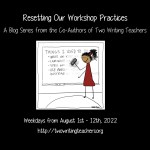

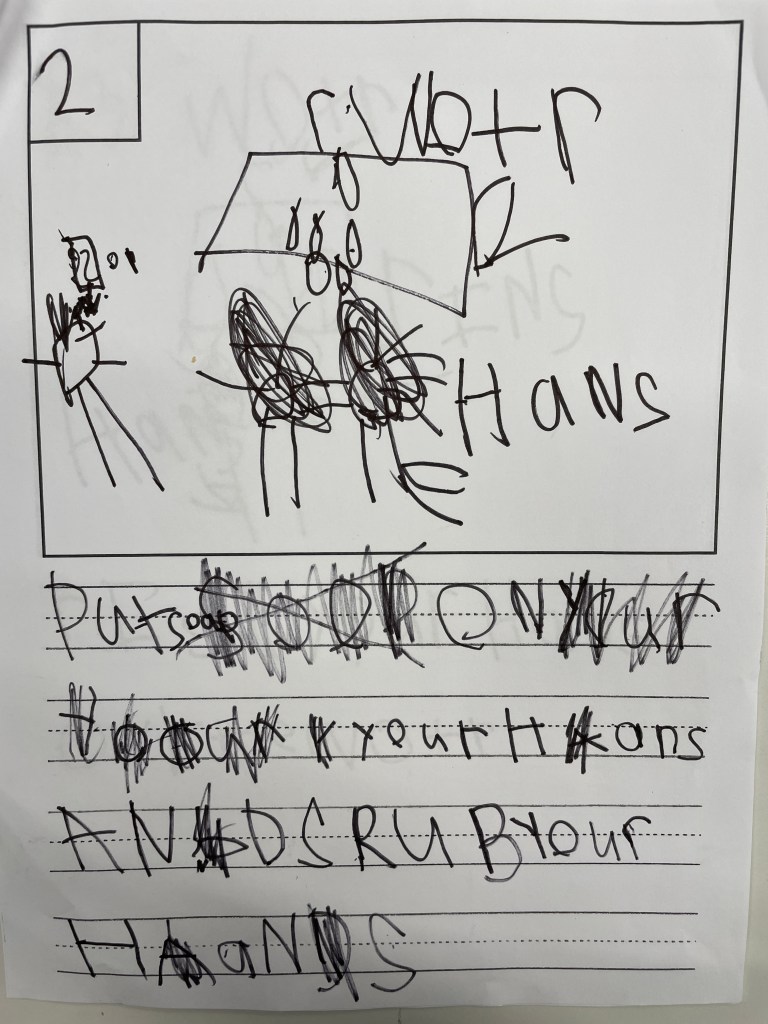
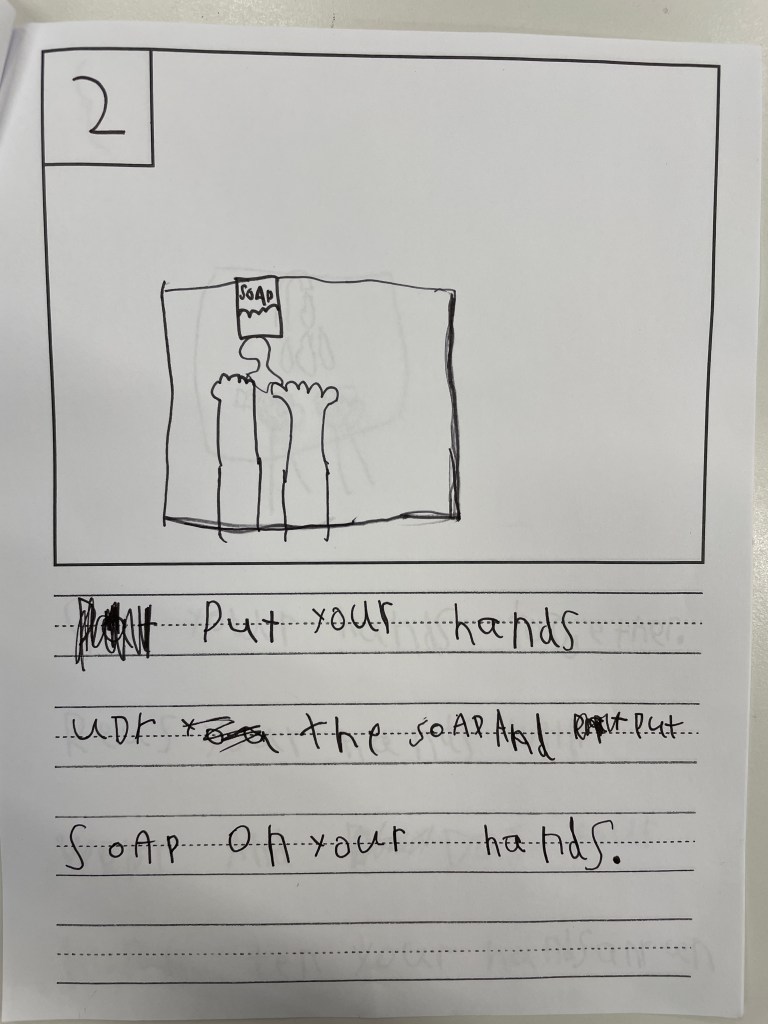
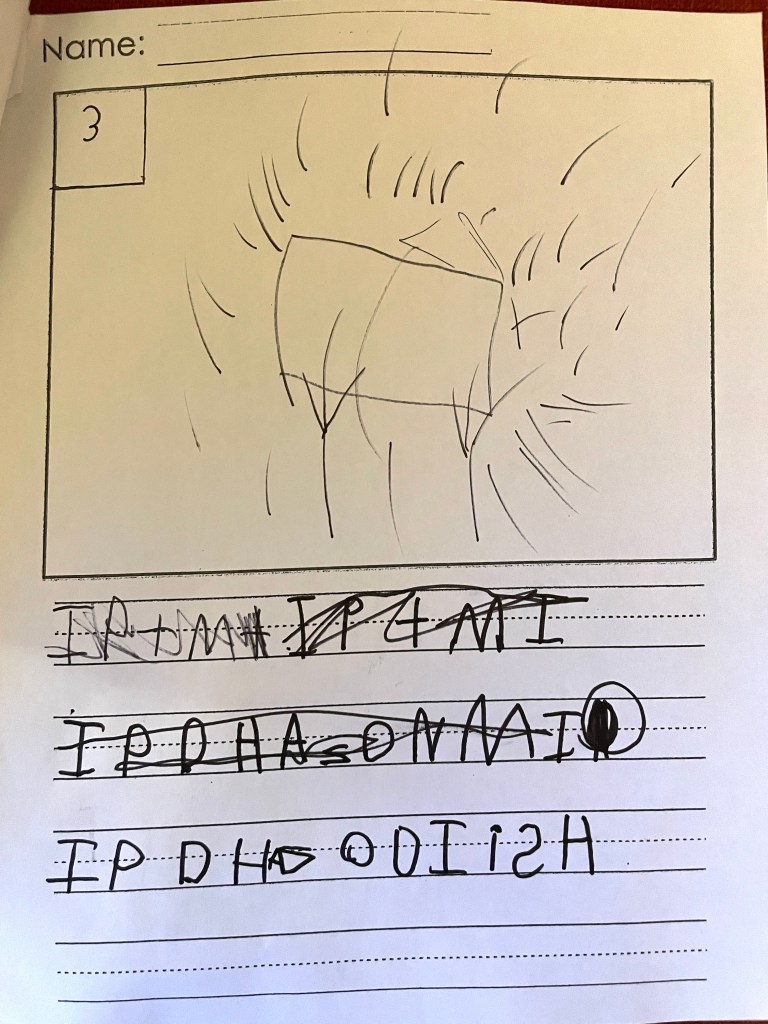
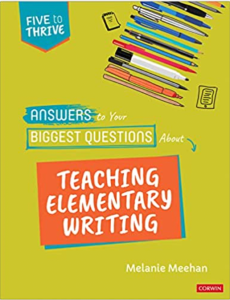

The description of learning just as much from what is crossed out as from what remains on the page is a great tool and example. The reflection that writing is messy is a powerful lesson, especially for the children who spend large bits of time erasing.
LikeLike
Have you ever adopted a method without really understanding why you do it? I have carried around a bag of felt tip markers from class to class for years. Every time we start notebook writing, I open the bag and let the kids choose their color for that day. I thought I was doing it to provide choice and voice and motivation to writing, but your article has opened up a whole new world of possibility. Thanks for influencing my thinking. I also feel affirmed for doing this already.
LikeLike
This is such a thoughtful explanation of your process. The “unwriting” concept is so important and the learning you have from their cross outs invaluable.
LikeLike
Although I have in recent years encouraged older children to choose their writing implement, I never thought about using felt marker for kindergarten and younger students. I’m going to give this a go!
LikeLike
I hadn’t thought about this or heard about using a felt tip marker for writing. This is a great way for students and teachers to see the thinking process to their writing. Love this!
LikeLike
Oh my gosh, this is a phenomenal idea that makes me want to go back into the classroom and have my kids write with pens or markers. There are so many points you made in this story, that I cannot repeat them here or I’d be repeating your entire story. I am going to try this out when I’m substituting…because I often ‘squeeze’ in my own writing activity during some free time.Thank you!!! 🙂
LikeLike
Answers to Your Biggest Questions About Teaching Elementary Writing would be a perfect companion to The Writing Revolution workshop I participated in this summer. As an Instructional Coach, writing is one of our SMART goals this year.
LikeLike
Valuable insights about approximations.
I remember the day I watched a fourth grader as he wrote a half page, erased it, wrote a half page again, erased it, wrote a half page and erased it a third time. So at the end of workshop time, the paper was blank when he had written a cumulative page and a half. That convinced me of the power of writing in ink/ with a marker.
LikeLike
Thank you for this reminder to use markers for writing. As a fellow kindergarten teacher; I enjoy different explanations for using markers during writing! I love the “writing is messy”!
LikeLike
As a fellow Kindergarten teacher, I wholeheartedly agree with the use of a marker during Writer’s Workshop. We made this switch a few years back, and while it took some adjusting to — for students and teachers — we wouldn’t have it any other way. While I’ve always known about the benefit to speeding up the “I want to make a change in my writing process,” I’ve never thought about the “writing is messy” message it sends to young writers. Adding this to my list of benefits. Thank you for this post and this wonderful, useful series! — Christie at wymanc@weston.org
LikeLike
I’ve long been a convert to having students use pens when writing–I love seeing the evolution of student thinking on the page! You have me pondering a couple of things though, and I’d really be interested to know what you think. I have typically included pens as a choice, along with pencils. I haven’t usually included felt tip pens because of their expense. Are you choosing felt tip pens because of their increased friction/feedback, or is there some other reason you choose those over other ink options? Do you think the value of writing in ink outweighs the value of writing utensil choice? Thanks for a post that got my rusty wheels turning while I set up my classroom for the coming year 🙂
LikeLike